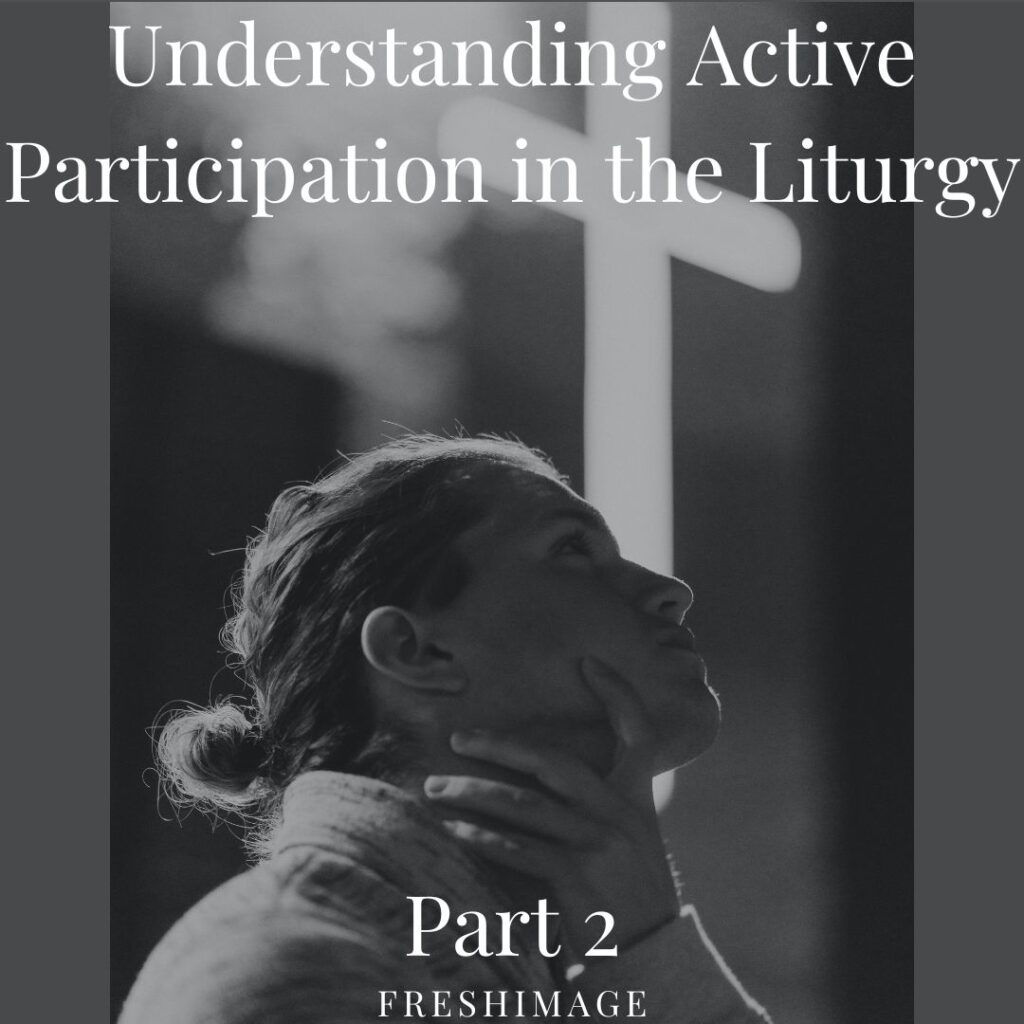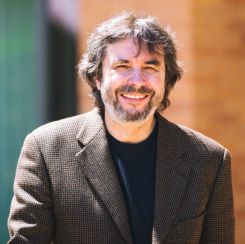
In part 1 on this series on active participation in the liturgy, I discussed the topic in a general way, covering some aspects of the concept’s historical development. Active participation is one of the critical conditions necessary to make the liturgy fruitful. To understand why this is the case, we might ask ourselves a very basic question. What is the ultimate goal of the liturgy? Jesus gave us the precious gift of the Eucharistic liturgy as an instrument to unite us with Himself on our earthly pilgrimage. That said, Scripture is also very clear that just because one carries out an act of worship given by God to His people, not all such performed acts of worship are pleasing to God. Jesus quotes the prophet Isaiah in the Gospel of Matthew in order to issue this stern warning:
This people honors me with their lips, but their hearts are far from me; in vain do they worship me, teaching human precepts as doctrines (Matthew 15:8-9).
In short, the efficacy of the Mass cannot be taken for granted. Jesus is clear as was the Word of God revealed in the Old Testament through the Prophet Isaiah, those whose “hearts are far” worship God “in vain.”
The Fathers of the Second Vatican Council got at this in a different way when they taught that “the liturgy is the summit toward which the activity of the Church is directed” (Sacrosanctum Concilium, 10). The image of a summit used by the Council Fathers is instructive here. Just as it takes tremendous effort to climb a tall summit, so too climbing “the holy mountain” of the sacred liturgy to reach the summit of encounter with God takes effort on the part of the faithful. If our hearts are far from God climbing this mountain entails a radical change of heart in the form of conversion, as Jesus implies in the quote from Matthew above. Uttering prayers and performing rites, even when all the external activities are done perfectly down to the letter, do not of themselves guarantee that one will reach the ultimate goal of the liturgy: unification with God. They are only the tools, the climbing gear, if you will, that when used correctly help us attain the goal of a summit encounter with God. Using more theologically appropriate language, all of the elements of the rites are symbols that must be read and understood properly in order to enter into the Eucharist mystery in a more profound manner. Only when understood properly do these sacramental symbols enable us to go beyond the external sign so as to enter into the eternal drama of Christ’s salvific sacrifice.
Over the last few decades, the Church has observed an evident downturn in Mass attendance, while an increasing number of people expressed dissatisfaction with their experience of the Mass, citing a lack of spiritual fulfillment. One critical reason for this crisis is a general decline in the ability to connect with the liturgy and the loss of the capacity to engage with symbolic action, an essential trait of the liturgical act. One of the most consequential Catholic thinkers of the 20th century, Romano Guardini, believed that without grasping the symbolic and sacramental nature of the elements of the liturgy meaningful participation is not possible. One can think of the liturgy as its own language. Just as the words of a foreign language remain unintelligible to the listener, so too the liturgy will fall on deaf ears if we have not been trained to understand its language.
For example, the liturgy makes use of the biblical imagery of the bride spending a lot of time for preparation for the coming of the groom. Among other things, this imagery conveys that idea we must satisfactorily prepare ourselves to participate in the “wedding banquet” of Christ. Along these lines, the we are warned in the Gospel of Matthew that those unprepared for the wedding feast might find the door closed and locked (Matthew 25:10-11). Consequently, the Second Vatican Council Dogmatic Constitution on the Liturgy, Sacrosanctum Concilium states that “it would be futile to entertain any hopes” of fostering participation without liturgical formation given not only to the clergy and the ministers but the entire congregation (SC, 14). Similarly, in his apostolic letter Desiderio Desideravi, Pope Francis calls for a “serious and vital liturgical formation” of the people of God through a “rediscovery of a theological understanding of the liturgy” (DD, 16).
Fr. Eusebius Martis, OSB, a former director of the Liturgical Institute at the University of Saint Mary of the Lake, points out that one of the principal goals of the liturgical formation should include an effort to restore the “liturgical sense.” By this Fr. Martis means an ability to go beyond an understanding of the liturgical symbols in their linguistic, cultural, and historical context to discover their sacramentality. The liturgy’s elements are more than just conventional signs: they are gateways leading us to “the other side” of themselves through themselves to the reality of the eternal sacrifice of Christ and His celestial banquet.
Liturgical formation for the congregation is a never-ending quest that requires a lifetime commitment. It is a form of mystagogy, an introduction of the faithful to the mystery lying at the center of our faith. In Pope Benedic XVI’s apostolic letter summarizing the October 2005 Synod on the Eucharist, Sacramentum Caritatis, the late pontiff articulate three essential components of liturgical formation: 1) mystagogy interprets the liturgical rites in the light of the events of our salvation; 2) mystagogical catechesis must be concerned with presenting the meaning of the signs contained in the rites; and 3) mystagogical catechesis is concerned with bringing out the significance of the rites for the Christian life in all its dimensions. As these three components make clear, liturgical formation is multilayered in much the same way as learning a new language. Consequently, just as learning a new language takes much effort to learn, and much time spent practicing it in order to become proficient in its use, so too liturgical formation. If we are to learn this sacred language we must spend the requisite time and effort to learn it, and above all practice it by attending the sacred liturgy, where we obtain the grace necessary to climb the summit of the sacred mountain to encounter our loving God.

Andrzej Zahorski is Director of Music at St. Anselm Parish in St. Louis, MO. He holds a doctorate of musical arts from Stanford University.